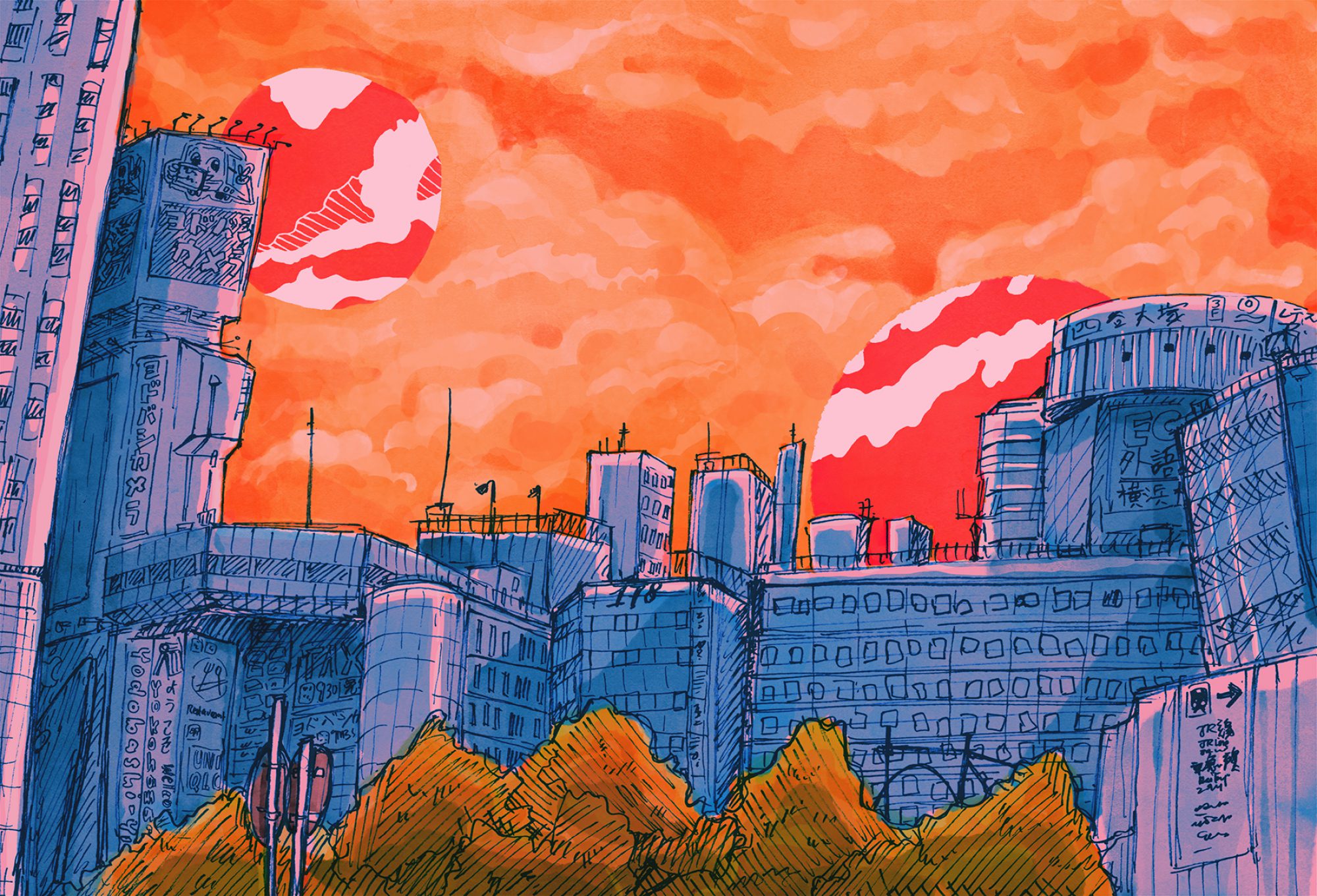The Japanese Cemetery Park.
Find the final project presentation slides here
The self-imposition of a chilling effect is something that Singaporeans are well-acquainted with, considering how natural it is for us to shy away from more controversial topics in order to stick with the idea of the ‘status quo’. Our history is part of this effect, and no — not the glorious ‘fishing village to first world city’ story that has been espoused by Singaporean leaders, media and public education. It is the parts of our history that have been shunted to the side to only appear in the occasional blog post, forums or self-run local news outlets, which have been the stars of efforts to stifle non-mainstream news.
Of this, the pre-independence past that was mired in the years of conflict during the Japanese Occupation is particularly painful to recall for many Singaporeans, mostly attributed to the cruelty of the Japanese, especially towards people of the Chinese race. Many of these Japanese soldiers who fought in Singapore and passed away here were surprisingly, not repatriated. Instead, they have been buried in Singapore, namely The Japanese Cemetery Park (日本人墓地園), located at 825B Chuan Hoe Avenue.
Tucked away within a quiet residential estate, I first got to the know the place through a blog post more than two years ago when I was scouting for historically rich locations in Singapore for a research project. Visiting the site was even more eye opening. The park was well-kept, with bougainvillea trellises arching over pathways, greenery growing next to the graves and a small shrine in the middle of it all. The ‘Park’ aspect of the Cemetery was certainly not for show. Further research into the place unveiled its long 127-year history as the largest Japanese Cemetery in Southeast Asia, with 910 tombs. With all its invaluable information, why was the park not part of the monuments commemorating the mainstream war narrative?
All this warrants a look back to the history of the Park itself, which dates back to the 1890s during the era of the pre-war Japanese community. In the 1870s, Japanese pimps would gather young female teens from impoverished families in Japan to ship them off to countries as part of the Japanese prostitution trade in places such as Southeast Asia and Siberia, and these prostitutes were labelled as karayuki-san. Singapore was a major city that had an establishment of Japanese brothels along Middle Road to service the needs of immigrants and foreigners arriving at their ports. However, living conditions were poor and dysentery and cholera were not uncommon amongst the karayuki-san, causing many of them to pass away within the brothels even before the age of 20. To provide them with a resting ground, a brothel and rubber plantation owner Tagajiro Futaki donated 7 acres of plantation and set up the cemetery. The karayuki-san’s graves used to have wooden markers in their place. However, the rotting wood prompted them to be replaced with stone markers. However, their names are now unfortunately, almost indistinguishable on the worn out marker surfaces.
The next group of Japanese that arrived in Singapore were the blue-collar businessmen sent to expand global business efforts that were a product of the Meiji Restoration, as well as World War I that had caused the Western powers to leave a vacuum of business opportunities in Southeast Asia that the Japanese were eager to take. They formed the middle-class of the Japanese community and started to establish respectable trades and shops such as banks, fishing companies, and textile shops shops along Middle Road, establishing the area’s moniker as ‘Little Japan’. This bourgeoisie class is represented in some of the larger and opulent graves in the Cemetery.
However, what the Cemetery is most known for, or at least, among the people who are aware of it, is the presence of the graves of the Japanese soldiers from the war, of which there are four types of memorials. The War Memorials are three stones that were erected by Japanese Prisoners-of-War (POWs) after the Occupation to honour the 10,000 soldiers that were interred in the now defunct Japanese shrines, namely Syonan Chureito at Bukit Batok and Syonan Jinja at MacRitchie. Next, a long capped pillar built for the 79 Japanese war criminals hanged at Kuala Lumpur, Penang and Malacca.There is also a memorial that was built to honour the 135 officers who were hanged at Changi Prison, who had took part in the Sook Ching Chinese massacre, and atrocities done to Allied POWs and civilians. The cemetery also houses the individual grave of Field Marshal Count Hisaichi Terauchi, the Supreme Commander of the Japanese Army in Southeast Asia, which was endorsed at the highest level of Japanese command.
The underlying message that ties these four monuments seems to be one of unrepentance, with the monuments using words such as junnan, or martyrs, to describe these military personnel, as well as the guide for the cemetery stating that the memorial to the 135 officers was one of ‘lifelong hatred’. This falls in line with the common perception of the lack of Japanese repentance for their war crimes till today, supported by the facts that they have offered little compensation to victims of the war and there are no state-funded national museums that speak of the atrocities that they have committed.
After the war, the cemetery was left in a state of disrepair but was cleaned up soon after by the Japanese Association in 1957. The cemetery was then closed off to burials in 1973 by the Singaporean government, and then designated as a heritage site in 1987.
So what?
From some of the cemetery occupants, it is easy to see why Singaporeans would have a hard time entering the Park, and why the government does not promote it as a heritage site despite its long history in the Singaporean landscape. Based on surveys that I set out to conduct in early 2018, when respondents, who were not initially aware of the Park’s existence, were asked the question “Based on its name, what would you expect the Park to be?”, 63% of my respondents selected the option “War Dead”. The textbook Singaporean narrative that has selectively picked out bits of history for us learn has shaped our perception of the non-modern Japanese, within the Singaporean context, as a people that had only stepped foot on the island when the war had started, as brutal antagonists. It came as a shock to me, and to many that I had talked to, that there was a whole community of thousands of peaceful Japanese civilians and their families that had walked the same land as us. There is much documentation of their social coexistence with us, through setting up organisations and schools, as well as economically through businesses and the fishing trade. However, their existence along Middle Road as Little Japan has been all but entirely erased, an effect of the “trademark white-washing and sanitisation of a history that does not lend itself well to the future Singapore as imagined by the Singaporean government,”, according to Kenneth Tay, an independent curator. Buried underneath the local facade of Bugis is the history of Singapore as a country of immigrants, but all that remains of the Japanese’s pre-war past is contained almost solely in the Cemetery.
However, there is simultaneously a lack of conversation and subsequent indifference towards grievances from the war, especially within the younger generation that has been considerably detached from the idea of war in today’s relatively peaceful climate, compared to the horror and turbulence of the Occupation. This stagnation in discussion extends to the Japanese community within Singapore as well. There were 36,000 Japanese residents in Singapore in 2014, and the the Japanese School Singapore has been the largest international Japanese School in the world since 2013. Japanese businesses and Japanese cultural festivals and conventions dot the social entertainment and shopping scene in Singapore. Despite making up a significant portion of our population and being so culturally prevalent in Singapore, there has been a noticeable lack of conversation between locals and the Japanese concerning the pertinent topic of the Japanese Occupation, an event that historically binds the two populations together.
The significance of the Park, Japanese Occupation and the Pacific War outside Singapore concerning the native Japanese who come to the island is a subject worth exploring as well. In Singaporean photographer Chan Aik Beng’s 2016 project ‘Mute’ that starred the Japanese Cemetery, responses from native Japanese people towards the Cemetery showed that many of them had only learnt of the karayuki-san when in Singapore, and expressed much grief and remembrance in their statements. Moreover, according to Yoshie Osawa, a longtime Japanese resident of Singapore, many native Japanese are unaware of the history of the Japanese in Singapore, only having had a few lines dedicated to the small island in their history textbooks on the topic of the Pacific War. Only after their tour of exhibitions dedicated to the Occupation, were they shocked by the extent of horror and cruelty that was inflicted on Singapore by the Japanese Army at that time. Yoshie-san also informed me of the sensitivity and taboo nature of the Pacific war in Japan itself, as many of the the older generation had suffered the loss of loved ones in the war as well, including her father. It was at this statement that it hit me that it was important to consider that while the Japanese Army were certainly aggressors that had tormented many in our Singaporean past, it was not simply our blood that was spilled. Casualties also extended to the native Japanese themselves, and had affected the generations after. The adage, “There are no true winners in war.” rang clear and true.
The Park is thus a place that represents intersections. Loss and remembrance, civilians and military, locals and natives, filtered histories and brutal truths — peace and war in both Japan and Singapore. The commonality between all these points are the emptiness of dialogue within these areas, that brings forth the question of whether this should remain so that we do not disturb the bedrock of the history that we have established for ourselves, or do we shake our present perception with the truth that risks upsetting the balance of what we have known? I believe that ignorance and anger bring no positive change, and forgetting our past poses an even greater danger. We must open our eyes to all angles of the situation to gain a deeper understanding of who we are as a nation, and our standing within this world.
References.
Blackburn, Kevin. “Heritage Site, War Memorial, and Tourist Stop: The Japanese Cemetery of Singapore, 1891-2005.” Journal of the Malaysian Branch of the Royal Asiatic Society, Vol. 80, No. 1 (292), June 2007. 17-39.
History of Cemetery Park. Japanese Cemetery Park. Singapore. N.d.
Spitzer, Kirk. “Why Japan is Still Not Sorry Enough.” Time, Dec 11 2012, http://nation.time.com/2012/12/11/why-japan-is-still-not-sorry-enough/
The Japanese Association. 100 Year History of Japanese Community in Singapore. Singapore: Toubi Singapore Pte. Ltd, 2016.
The Japanese Association. Prewar Japanese Community in Singapore – Pictures and Record. Singapore: Japanese Association, 2004.
Warren, James Francis. Ah-ku and Karayuki-san: Prostitution in Singapore, 1870-1940. Singapore: Oxford University Press, 1993.
Warren, James Francis. “Karayuki-san of Singapore: 1877-1941.” Journal of the Malaysian Branch of the Royal Asiatic Society, Vol. 62, No. 2 (257), 1989. 45-80.
Wikipedia. “Japanese War Memorials.” Japanese Cemetery Park. Retrieved 15 Nov 2018. https://en.wikipedia.org/wiki/Japanese_Cemetery_Park#Japanese_War_Memorials.
Wikipedia. “The Japanese School Singapore.” Retrieved 15 Nov 2018. https://en.wikipedia.org/wiki/The_Japanese_School_Singapore.

